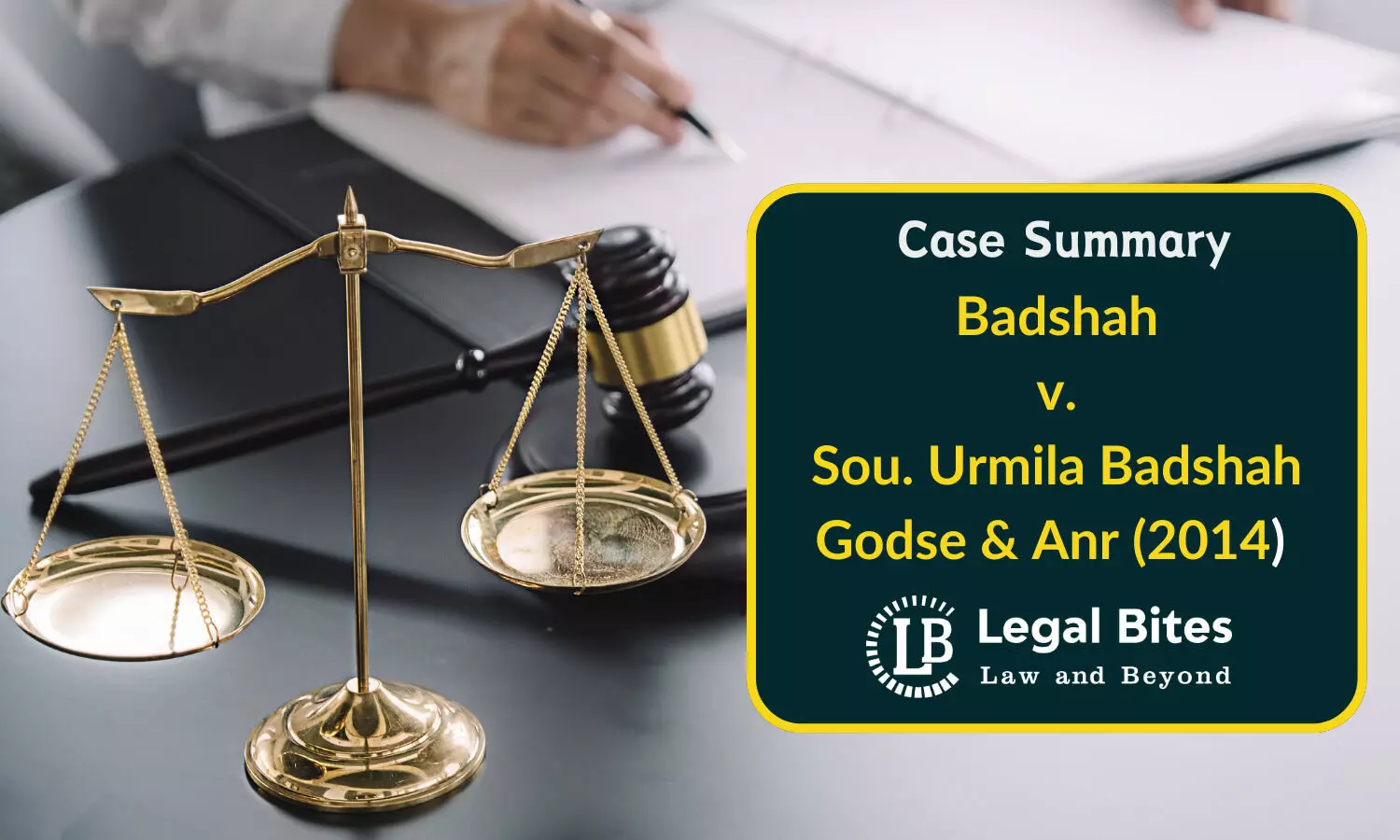Case Summary: Badshah v. Sou. Urmila Badshah Godse & Anr (2014) | Maintenance under Section 125 of the CrPC
In this case, the Supreme Court emphasized that the term "wife" as mentioned in Section 125 of the CrPC should be interpreted broadly and inclusively.;

The Supreme Court laid down the principle that a woman who enters into a marriage in good faith, unaware of her husband’s existing marriage, is entitled to maintenance under Section 125 of the CrPC.
Case Title: Badshah v. Sou. Urmila Badshah Godse & Anr
Citation: 2014 (1) SCC 188
Court: Supreme Court of IndiaBench: Justice A.K. Sikri and Justice Ranjana Prakash Desai
Judgment Date: October 18, 2013
Facts of the Case:
The petitioner(appellant), Badshah, sought leave to appeal against the judgment of the Bombay High Court (Aurangabad Bench), which had upheld the maintenance award to the respondents, Sou. Urmila Badshah Godse (Respondent No.1) and her daughter (respondent No.2), under Section 125 of the Code of Criminal Procedure (CrPC).
Respondent No.1 claimed to be the petitioner's wife, having married him in 2005 after obtaining a divorce from her first husband in 1997. Her marriage to the petitioner was solemnized following Hindu rites and customs.
The couple lived together for three months after the marriage, and during that period, she became pregnant. However, when another woman, Shobha, claimed to be the petitioner’s wife, Respondent No.1 faced mistreatment and left the petitioner’s home. Respondent No.2 was born after this separation, and both respondents sought maintenance.
The petitioner contested the claim, arguing that he had married Shobha in 1979 and was still married to her, making his alleged marriage to respondent No.1 void. He denied having married Respondent No.1 and denied paternity of Respondent No.2.
Issues:
- Whether Urmila could be treated as the legally wedded wife of the petitioner under Section 125, Cr.P.C. despite the petitioner’s subsisting marriage with Shobha.
Whether (Respondent No. 2) the daughter, was entitled to maintenance from the petitioner.
Judgment:
The trial court and the Additional Sessions Judge both ruled in favour of respondent No.1, awarding maintenance. The Supreme Court also upheld this decision, dismissing the petitioner's appeal.
Maintenance of Respondent No.2: The court unequivocally held that the petitioner was responsible for maintaining respondent No.2, as it was proven that she was born from the cohabitation between the petitioner and respondent No.1. Thus, under Section 125, CrPC, the petitioner’s obligation to provide for his daughter was non-negotiable.
Status of Respondent No.1: While the petitioner was already married to Shobha at the time of his alleged marriage to respondent No.1, the court took a purposive approach to interpreting the term "wife" under Section 125, CrPC.
It emphasized that the petitioner had deceived respondent No.1 by not disclosing his first marriage. Therefore, the court ruled that the petitioner could not take advantage of his own wrongdoing to deny maintenance to respondent No.1, despite her not being a legally wedded wife under the Hindu Marriage Act. The court broadened the interpretation of the term "wife" to ensure that women in such situations are not left destitute.
Social Context Adjudication: The judgment highlighted the need for courts to adopt a “social context adjudication” approach, especially in cases involving vulnerable sections of society. The court underscored that the purpose of Section 125, CrPC, is to ensure social justice, particularly for destitute women and children.
Interpretation of Law: The court referred to earlier judgments such as Chanmuniya v. Virendra Kumar Singh Kushwaha and Dwarika Prasad Satpathy v. Bidyut Prava Dixit to emphasize that the purpose of maintenance laws is to provide for the sustenance of women and children in distress, even when strict legal formalities like proof of marriage are not fully met.
Preventing Injustice: The court emphasized that a husband cannot benefit from defrauding a woman into a void marriage. Therefore, respondent No.1 was entitled to maintenance under Section 125, CrPC, as the petitioner’s "wife" for maintenance claims.
Conclusion:
The Supreme Court dismissed the petitioner’s appeal, maintaining that Respondent No.1 was entitled to maintenance, even though her marriage with the petitioner was void due to the petitioner’s subsisting marriage with another woman. The court’s judgment was rooted in the need to ensure social justice and prevent destitution. The case reinforced the idea that Section 125, CrPC, is a welfare provision meant to protect vulnerable individuals, particularly women and children, from being left without means of sustenance.

